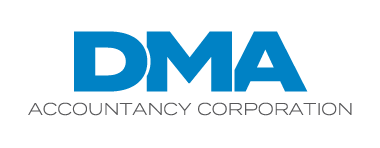When the pandemic hit in 2020, the federal government rolled out the Employee Retention Tax Credit (ERTC) under the CARES Act. Federal government officials and lawmakers created the credit to help employers keep employees on their payrolls as many industries struggled with shutdowns and restrictions.
Indeed, many contractors claimed the credit because of all the projects that were suspended or cancelled. If you’re one of them, you may still be wondering about your refund.
Tax break in a tough time
The ERTC is a refundable tax credit available to employers that:
- Continued paying employees while shut down because of the pandemic, or
- Suffered significant drops in gross receipts between March 13, 2020, and Dec. 31, 2021.
The maximum per-employee credit was $5,000 for the entirety of 2020. It jumped to $7,000 per quarter for the first three quarters of 2021. So, an employer could potentially receive tens of thousands of dollars in refunds for each retained employee.
Unfortunately, the ERTC attracted a plethora of unscrupulous “promoters” (as the IRS calls them) who promised employers payouts for which they weren’t eligible — all while charging hefty fees for their assistance filing claims, of course. These promoters downplayed or intentionally failed to mention the credit’s strict requirements.
The IRS has made clear that promoters who assured employers they had “nothing to lose” in filing a claim were incorrect. Ineligible claimants, in fact, could stumble into repayment requirements, penalties, interest and audits.
Resulting delays
In September 2023, after receiving a deluge of invalid claims, the IRS imposed a moratorium on processing new ERTC claims submitted after Sept. 14, 2023. The agency then turned to reviewing about 1 million submitted claims, representing more than $86 million.
The IRS discovered that 10% to 20% of the claims had obvious signs of errors, and another 60% to 70% demonstrated an unacceptable level of risk. It announced that it would deny tens of thousands of erroneous claims and submit those with unacceptable risk for additional analysis.
Notably, the review of claims from 2020 alone turned up more than 22,000 improper claims, leading to $572 million in assessments against employers. The numbers were expected to ring in even higher for 2021 claims when the maximum per-employee claim amount was $7,000 per employee per quarter.
Not every claim was invalid, though. In early August 2024, the IRS said that it had identified 50,000 valid ERTC claims and was “quickly moving them into the pipeline for payment processing in coming weeks.” And as of this writing, it has begun processing claims filed between Sept. 14, 2023, and Jan. 31, 2024.
Risk mitigation
If you believe your construction business is likely ineligible for ERTC claims you submitted, there are ways to mitigate your risk. For example, assuming you’ve yet to receive, cash or deposit your refund, you can use the IRS’s ERTC withdrawal process. It’s open to employers that:
- Made a claim on an adjusted employment tax return (Forms 941-X, 943-X, 944-X, and CT-1X),
- Filed the adjusted return solely to claim the ERTC with no other adjustment, and
- Want to withdraw the entire ERTC claim amount.
The IRS will treat withdrawn claims as if they’d never been filed, and no interest or penalties will apply.
The tax agency also reopened its Voluntary Disclosure Program (VDP) for ERTC claims in August 2024. Under the program, employers can self-report ERTC claims for tax year 2021 that they think may be improper. (The VDP for 2020 claims has closed.) Participants must repay 85% of the credit they received, and the IRS will waive any penalties, interest and future audits. The VDP is scheduled to run through Nov. 22, 2024.
Act now
The impending VDP deadline highlights the importance of taking prompt action about uncertain ERTC claims.
© 2024


Recent Comments